How to Choose a Mattress
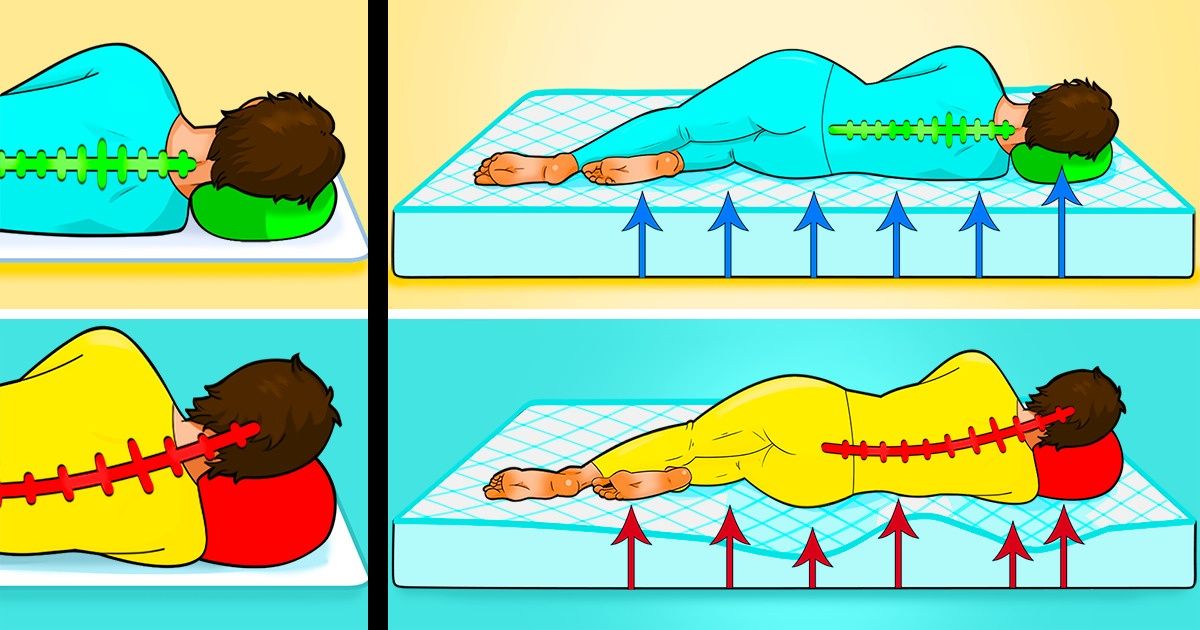
The average lifespan of a mattress is about 8 years. After this period, it’s better to replace it to be sure the mattress still provides enough support for your body. We at 5-Minute Crafts understand the importance of a good mattress, so we prepared a guide that will help you to choose the most suitable option for your body type and sleeping habits.
Step 1: Determine your sleeping position.
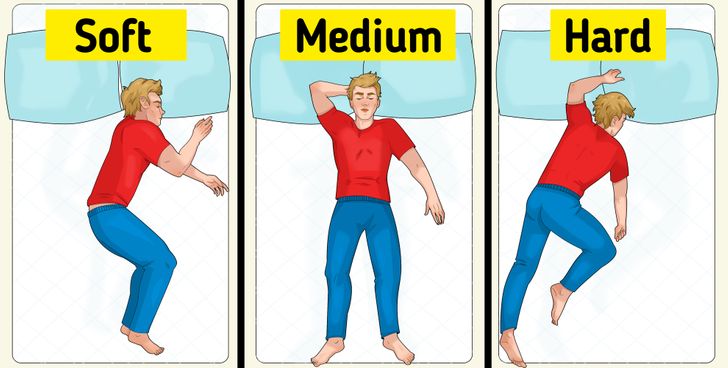
Although most people toss and turn during the night, we still have a favorite sleeping position or follow a certain pattern of movement while we’re asleep. To find the right mattress, choose what type of sleeper you are:
- Side sleeper: You need to find a mattress that helps relieve pressure off your shoulder joints and hips. Opt for soft or medium-firm options that support your body and adjust to its shape at the same time. Memory foam mattresses may be a good option for you.
- Back sleeper: Your goal is to find a mattress that provides enough support, keeps your spine in a neutral alignment, and isn’t too firm. Go for medium-firm options and make sure that when you’re lying down, your shoulders and your hips form a straight line. Hybrid mattresses may be a good option for you.
- Stomach sleeper: Your goal is to find the option that will prevent your hips from sinking into the mattress while keeping them in line with your shoulders. Choose firm models with a high level of support. But if you want your mattress to be softer, try innerspring or hybrid mattresses with pillow tops.
Note: If you sleep with your partner and your preferences don’t match, look for mattresses with dual chambers where each side can be adjusted by the manufacturer to your taste. And if you change your sleeping positions all the time, go for a medium-firm mattress.
Step 2: Consider your weight.
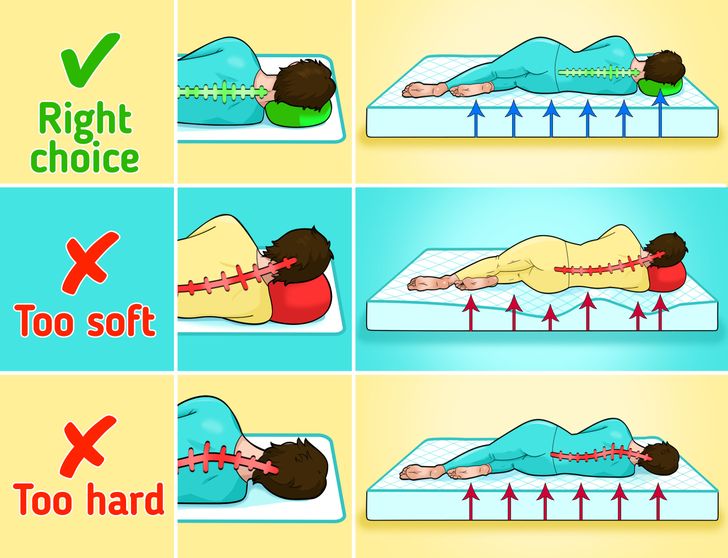
To choose a mattress of the right firmness, you need to consider your body weight. A proper mattress will provide you with enough spinal support and make sleeping more comfortable.
Heavier people may feel more comfortable on firmer, thicker mattresses because they don’t sink under their weight so much. And lighter people are likely to go for softer options since firmer models may not provide enough cushioning. As a result, there might be gaps between your body and the mattress, causing discomfort.
General rules regarding mattress firmness include the following:
- For a soft mattress, consider an option that is in the 4-6 range on the firmness scale, where 1 is very soft and 10 is very firm.
- For a medium-firm mattress, consider an option that is in the 5.5-7 range on the firmness scale.
- For a firm mattress, consider an option that is in the 7-9 range on the firmness scale.
Step 3: Choose the type of mattress.
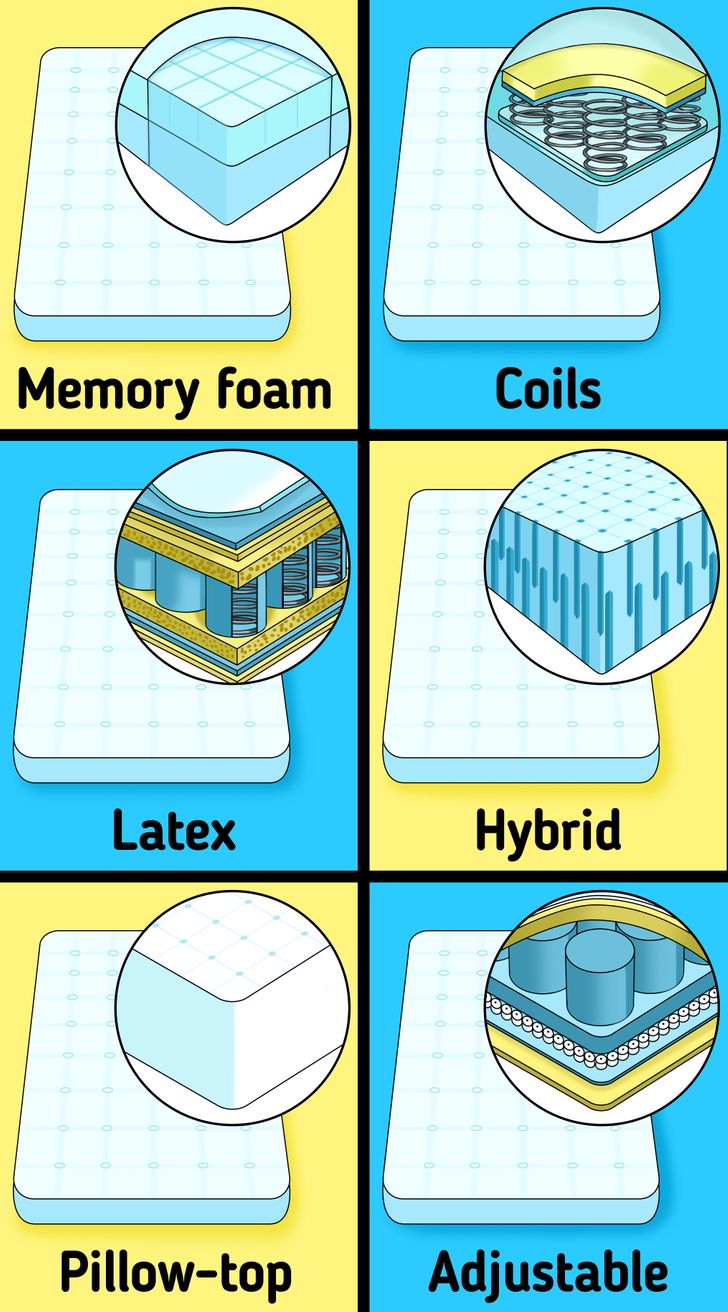
The type of mattress you should choose mostly depends on your taste, but there are certain benefits each option offers:
- Memory foam mattresses offer pressure relief and are great for side sleepers because they adjust to the contours of the body. But they may be too soft for stomach sleepers and don’t provide them with enough body support.
- Coil mattresses may be a good option for people who sleep on their back or stomach or for heavier sleepers because of their high support level and bouncy structure. But this type of mattress is unlikely to provide necessary pressure relief for people suffering from hip, shoulder, or back pain.
- Hybrid mattresses combine different types of materials like coils and memory foam. This is a relatively new type of mattress and there’s a great variety of them on the market, so it suits most people, and you just need to find one that’s the most comfortable for you.
- Latex mattresses are eco-friendly, slightly cooling, and bouncy. These characteristics make them great for people who toss and turn during the night. But if you’re looking for better pressure relief, latex mattresses may not be soft enough for you.
- Pillow-top mattresses have additional soft padding attached to their top. They’re suitable for side sleepers who don’t need much support. But such mattresses don’t last long and may lose their shape pretty quickly.
- Adjustable mattresses allow you to change their shape and position to your taste. For example, you can raise the head of the bed or adjust its position to suit your health conditions.
Bonus: Choose the right mattress size.
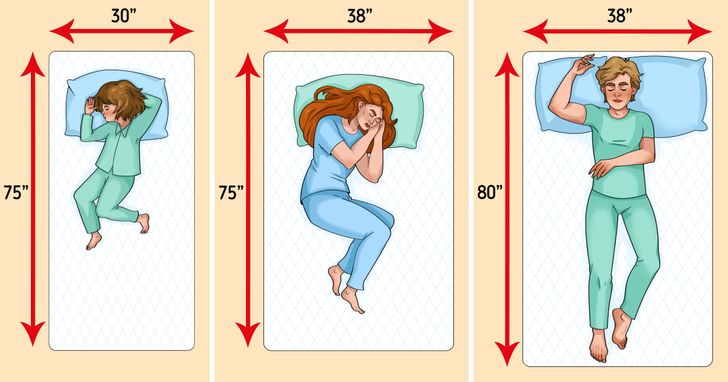
- Small single bed, 30″ width x 75″ length: It’s great for toddlers and can be used in cribs.
- Twin bed, 38″ width x 75″ length: It’s a good option for children and adults when you don’t have a lot of free space in the room.
- Twin XL, 38″ width x 80″ length: It may be more suitable for adults since it’s 5 inches longer than regular twin beds, and such a mattress won’t occupy much space because of its width.
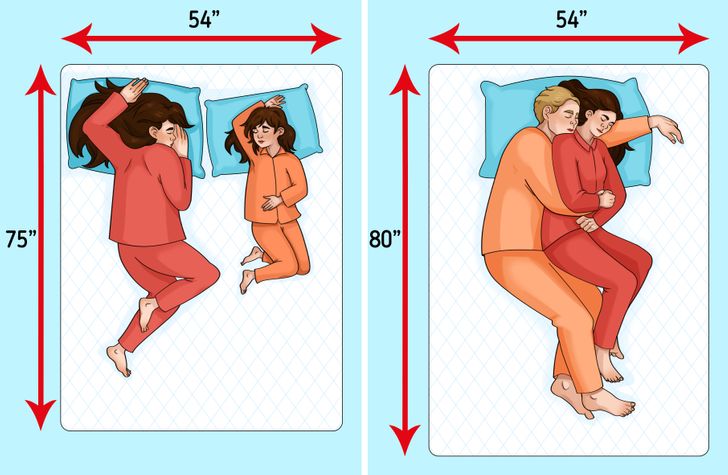
- Full-size bed, 54″ width x 75″ length: It’s a perfect option for adults who sleep alone and want more space than a twin bed can provide. You can also sleep with a child or a partner on it together, but for some people, it may not seem wide enough.
- Full XL bed, 54″ width x 80″ length: It may be more comfortable for partners because of its length.
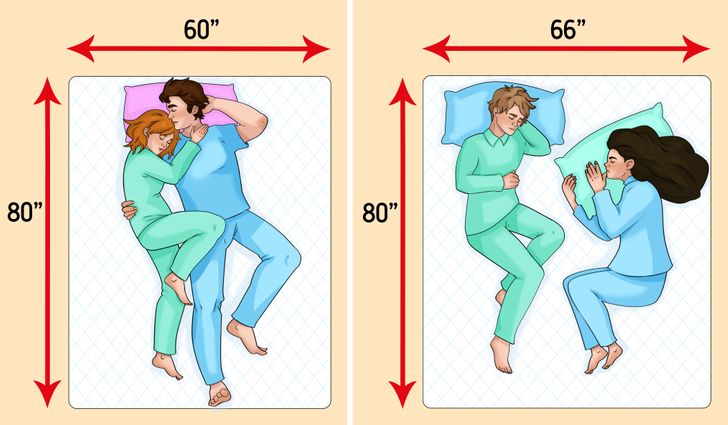
Queen bed, 60″ width x 80″ length: It’s a perfect option for almost every sleeper because it provides enough space for everyone.
Olympic queen bed, 66″ width x 88″ length: It’s slightly wider than usual queen beds and may be a good solution for people who want to get more space but aren’t ready to buy a king-size bed.
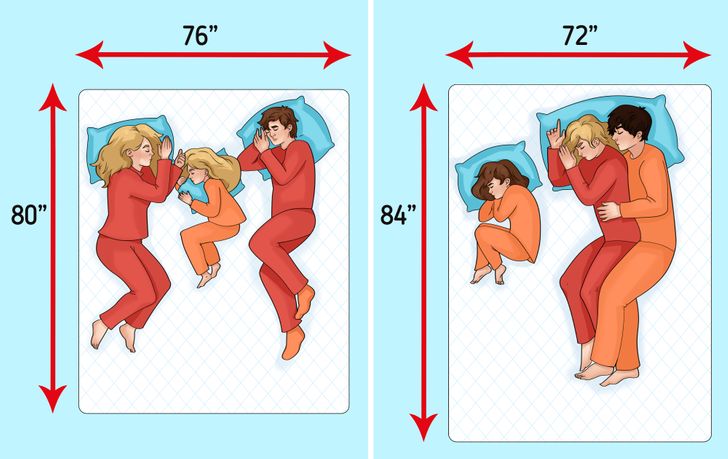
King bed, 76″ width x 80″ length: This is a good option for large rooms and people who sleep with their pets and children.
California king bed, 72″ width x 84″ length: It’s a bit narrower than the king bed but provides more room for the legs, which is great for tall people.